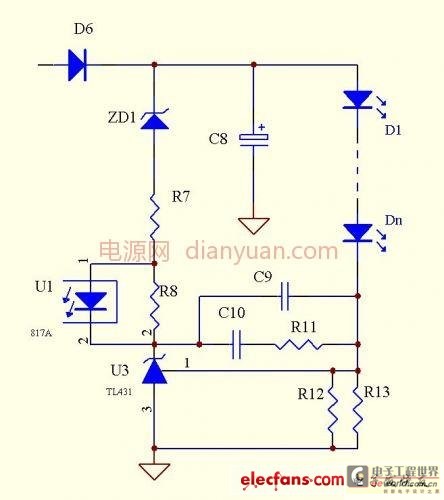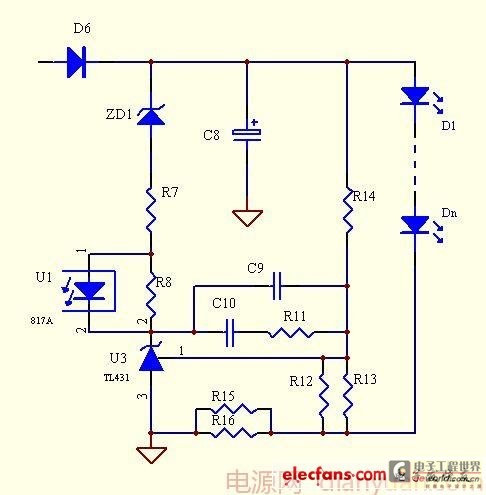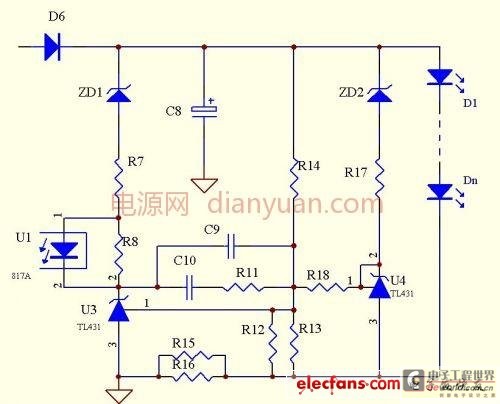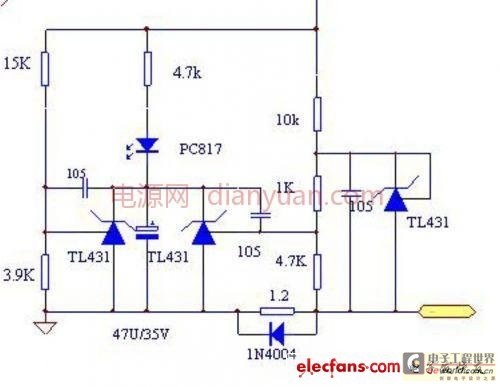As LED lighting is getting hotter and hotter, as the life pillar of LEDs, LED driver power is getting more and more attention. I have heard many people say this: LED power supply is a special power supply, which is very different from ordinary power supply, so do LED power supply to find professional LED power supply engineers. This statement casts a mysterious veil on the LED power supply, but as a power supplier, we all know that the LED power supply is actually nothing special. It is characterized by constant current limiting, and long-term operation under full load, so The requirements for efficiency are relatively high; some power supplies have height requirements due to structural size limitations. Below I will try to summarize some common methods of secondary constant current for the current small and medium power LED lighting power supply; not necessarily comprehensive, not necessarily deep, but finally some engineers who are new to the line help.
It is no exaggeration to say that the LED driver power supply will directly determine the reliability and life of the LED lamp; as a power supply engineer, we know that the characteristics of the LED require constant current drive to ensure uniform brightness and long-term reliable illumination. Let's talk about several constant current methods of the popular TL431.
1, a single TL431 constant current circuit

As shown above, it is a schematic diagram of using a single TL431 constant current.
Principle: This circuit is very simple, using the 431's 2.495V reference for constant current, which also limits the voltage drop across the LED, but the advantages and disadvantages are equally obvious.
Advantages: simple circuit, few components, low cost, because the reference voltage accuracy of TL431 is high, R12, T13 only need high precision resistance, high constant current precision
Disadvantages: Since the TL431 is a 2.5V reference, the loss of the constant current sampling circuit is extremely large, and it is not suitable for a power supply with an excessive output current.
The fatal flaw of this circuit is that it can not be idling, so it is not suitable for external LED power supply.
The constant current point calculation of this circuit is believed to be known to everyone: ID=2.495/(R12//R13)
The power of the sampling resistors R12 and R13 is PR=2.495*2.495/R13). For small power supplies, the loss of this power is considerable, so it is not recommended to use this circuit for products with current greater than 200mA.
2. Single TL431 constant current improved circuit

Principle: This circuit also uses the TL431's 2.495V reference for constant current. The difference from the above circuit is that the voltage of the current sampling circuit is reduced. As long as the total design values ​​of R12, R13, and R14 are combined, the LED can be limited. Pressure drop
Advantages: the circuit is simple, the components are few, the cost is low, compared with the above circuit, the power consumption of the sampling resistor is significantly reduced, the constant current precision is high, and the fatal defect that the above circuit cannot be idling is overcome, when there are individual LED strikes When you wear it, you can automatically adjust the output voltage
Disadvantages: When the output is unloaded, the output voltage will rise, and the rising range is determined by the ratio of the current sampling circuit resistance to R12 and R13.
In fact, the real disadvantage of this circuit is that when the voltage drop consistency of a single LED is not high, the constant current point will change accordingly.
For example, the most common 12-string LED lights, the minimum voltage drop is about 35.5V, the highest return to about 37.4V (personal experience, of course, different manufacturers will be different), then the constant current accuracy will be 5% difference - 8%
3, two TL431 constant current circuit

The biggest feature of this circuit is that it can accurately maintain constant current in a certain range.
4, 3 TL431 constant current circuits

In fact, this circuit adds a constant voltage circuit to the circuit of Figure 3.
Our Led Industrial Lighting are designed to provide optimal lighting for factories,warehouse,manufacturing plants,distribution centers,parking garages and gyms.etc..We have Led High Bay for indoor use,and UFO high bay with IP65 for outdoor use.Our main technology is in the radiating fins design.The riveting process for the radiator plate and fins is mainly installed in the mold fixture,each module comprise a plurality of fins,and with a predetermined gap between adjacent fins,and the fins can be inserted into the positioning mould,by interlacing the fins and the adjacent punch,the plate is with trench to positioning in metallurgical equipment,stamping equipment impact the back of the base plate to make the fins riveting consolidation,Through the implementation of the above technology,the stamping riveting method is better than the traditional radiator processing,it is highly effective and reduce the mould broken, and provide precision and high quality products.
Led Industrial Lighting
Led Industrial Lighting,Led Industrial Light,Industrial Outdoor Lighting,Industrial Led Lighting
Guangdong guangzhidian lighting Co., Ltd. , https://www.gzdlighting.com
